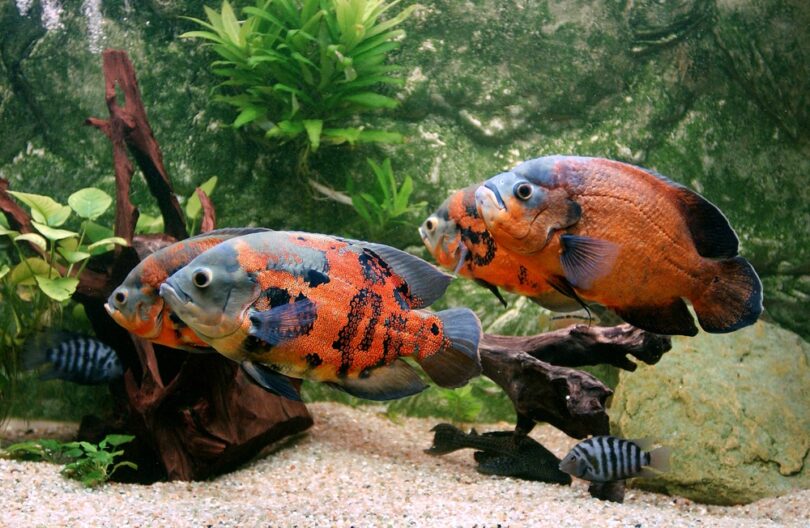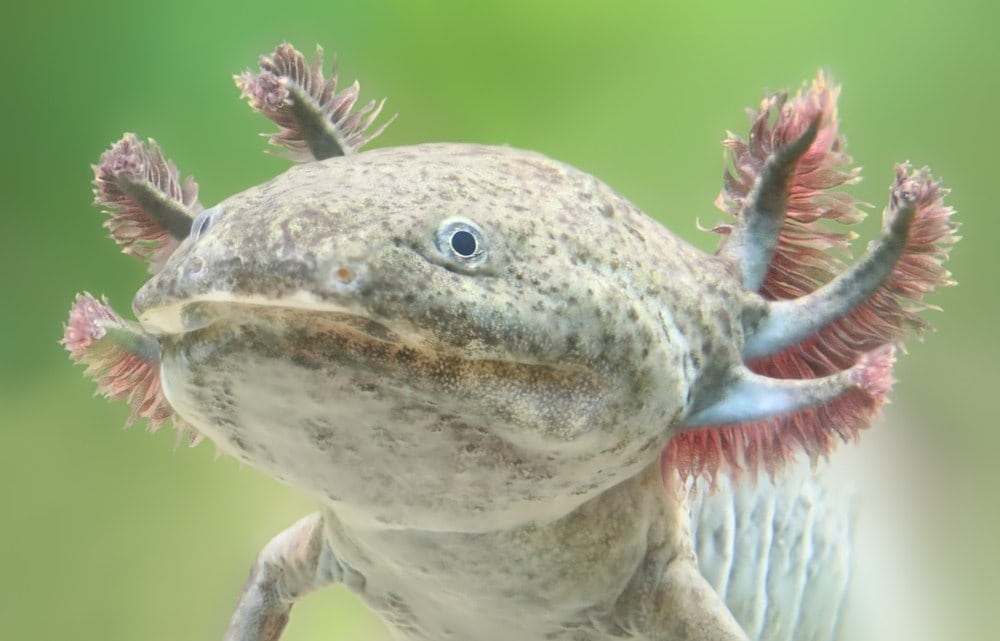How to Get Rid of Snails in an Aquarium: 5 Proven Methods
Updated on
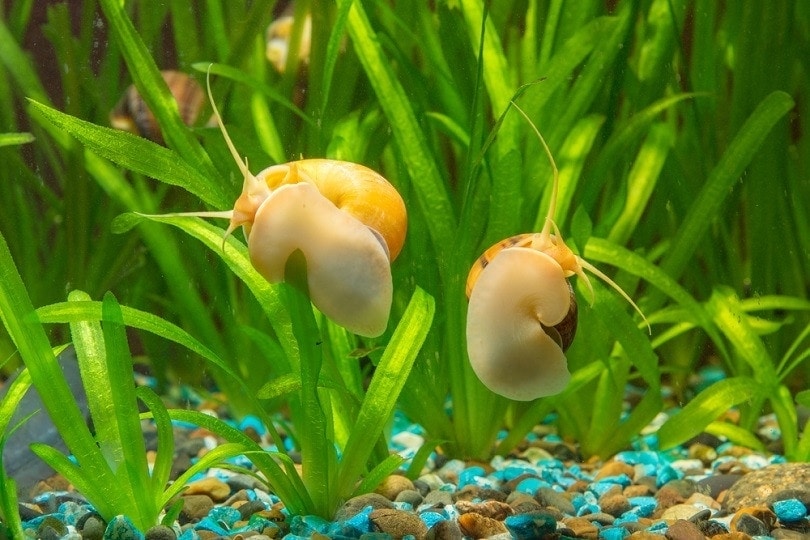
Snails can be seen as pests to many aquarists, and they can hitch a ride on live plants that you introduce into your aquarium. While you might think that picking out any snails you find will combat the problem, the issue is that snails can reproduce fairly quickly, and two snails can suddenly turn into an infestation within a few weeks.
The resulting snail infestation can leave aquarists feeling defeated and these snails may even ruin the aesthetic of your aquarium. If this is a situation you are currently facing, then this article will help you get rid of those pesky snails in your aquarium.
 Which Snails Are Infesting Your Aquarium?
Which Snails Are Infesting Your Aquarium?
Before choosing a snail removal method that will work for your aquarium, it is important to determine what type of snail has invaded the aquarium.
Certain species of snails like the nerite snail are unlikely to reproduce in an aquarium since the eggs only hatch in brackish waters, while bladder or ramshorn snails can quickly overpopulate in an aquarium with their rapid breeding behaviors.
Not all removal methods will work for each species of snail, so let’s discuss common species of snail and why they may infest your aquarium.
- Ramshorn Snails: This is a small species of snail from the Planoridaefamily, or the Ampullariidae family depending on the species. They are identified by their brownish-red or black coloration and spiraled shells. Ramshorn snails rarely exceed 1 inch in size, and they quickly reproduce by laying large clutches of eggs on different surfaces in the aquarium. Ramshorn snails breed prolifically in fish tanks where overfeeding is occurring.
- Malaysian Trumpet Snails: Scientifically known as the Melanoides tuberculate, the Malaysian trumpet snail thrives in an aquarium where there is plenty of leftover food, fish poop, and gunk in the substrate. These long snails are known for burrowing in the substrate, and they can quickly reproduce without you knowing. This is one of the most difficult snails to get rid of in an aquarium as they are excellent at hiding. However, they do benefit the substrate by eating uneaten foods and preventing gas bubbles from building up.
- Bladder Snails: These small and pesky snails from the Physidae family are probably every planted aquarium lover’s nightmare. These snails are considered invasive and notorious for overpopulating many aquariums. Bladder snails can be identified by brown coloration with yellow dots leading to three short whorls at the end of their shell. Bladder snails can be introduced into an aquarium by live plants that they hitchhike on and are often confused with pond snails.
- Apple Snails: Apple snails are a large species of snail from the Ampurllariidaefamily, reaching a size of 3 to 6 inches. They are typically the most tolerated snails in the aquarium hobby, and they are often intentionally kept as pets. They lay a clutch of pink or red eggs above the waterline, which makes it easy to dispose of eggs to prevent an infestation of these snails.
- Pond Snails: Pond snails or Lymnaea stagnalisis are medium-sized snails reaching a size of 1 to 3 inches. They have a brown and thick shell that ends in three whirls, making it easy for them to be mistaken as bladder snails. Pond snails can overrun ponds and home aquariums, and they will cluster together in groups during feeding. Pond snails and their eggs can be transferred into an aquarium through live plants.
- Nerite Snails: Nerite snails from the Neritidaefamily are considered the least concern when it comes to overrunning an aquarium. These snails require brackish water conditions to hatch, so you do not have to worry about any babies in a freshwater aquarium.
However, nerite snails will still lay eggs on the glass and other surfaces in the aquarium which can look unsightly. These snails are small and have fascinating shell patterns and colors.

Why and How Do Snails Infest Aquariums?
The most common reason for snails to invade your aquarium is if they are accidentally added to the aquarium through live plants, driftwood, or substrates that contain eggs or hatchlings. Factors such as overfeeding can create an ideal environment for snails to reproduce, as the excess food that sinks to the bottom of the aquarium is a food source for the snails of all life stages.
If snails are not something you wanted to add to your aquarium or they are causing issues, then removing them is the best option. It is difficult to keep a snail population under control, and many species are prolific breeders that can quickly overpopulate an aquarium.
Snails can then eat live plants, contribute to water quality issues by increasing the bioload of the aquarium, and simply make the aquarium look less attractive.
 Top 5 Aquarium Snail Removal Methods
Top 5 Aquarium Snail Removal Methods
1. Food Traps
There’s no doubt that snails love food, so they will swarm to areas where there is food. You can humanely trap the snails by clipping a large piece of lettuce to the side of the aquarium. The snails will begin to gather on the leaf and eat it, making it easy for you to lift the lettuce with the snails on and remove them from the aquarium.
It might take several tries to get rid of all the hatched snails, but this method won’t work for any snail eggs that have already been laid.
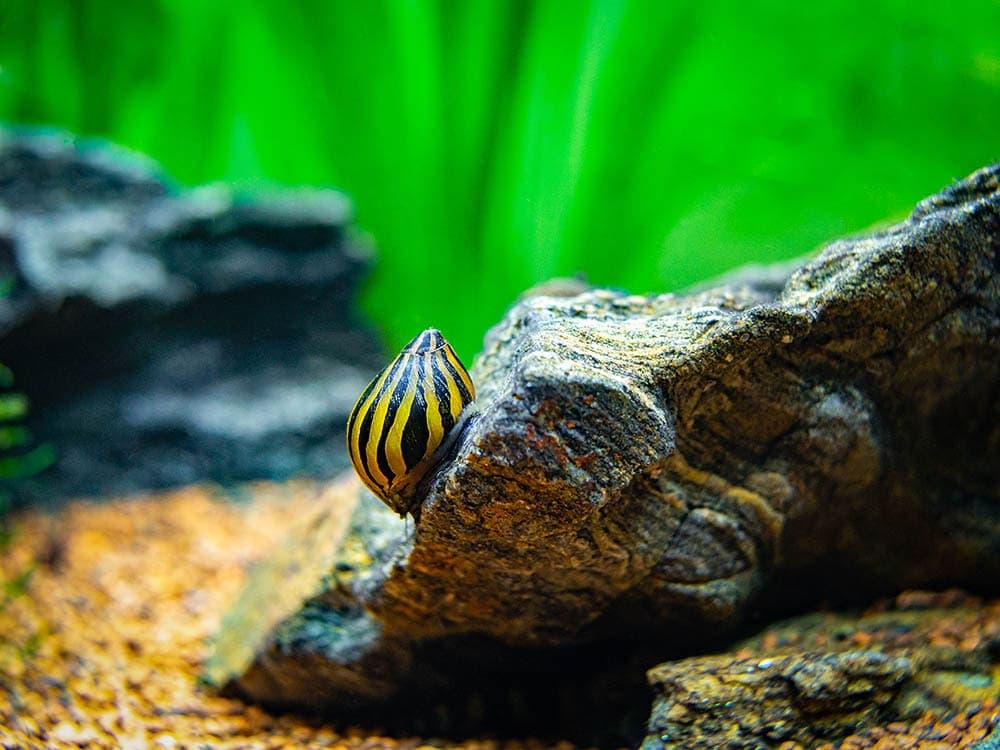
2. Manual Removal
This is the more time-consuming and tedious method of snail removal, but it can work for minor infestations in your aquarium. It is easier to use manual removal with larger snails like apple, pond, or nerite snails as you can spot them in the aquarium and pick them up in a net or with your hand to remove them.
3. Predatory Snails or Fish
The assassin snail is a type of predatory snail that eats other snails that are around the same size as them. As small snail that only grows 1 to 2 inches in size, they will kill smaller snails like pond, Malaysian trumpet, nerite, bladder, and ramshorn snails.
However, assassin snails can also breed rapidly in an ideal environment. While they will kill off the original infestation of pest snails in the aquarium, you will need to control the assassin snail’s population if you do not want that to become a problem as well.

4. Copper Sulfate
Copper sulfate is an ingredient found in certain fish medications, and it is deadly to snails. Copper sulfate can be used in an aquarium that does not have any invertebrates like shrimp or scaleless fish, as it can harm or even kill them. This is also the main ingredient in aquarium water treatments for snail infestations.
When it comes to using copper sulfate in an aquarium, be sure to follow the dosage directions on the label.
5. Feed Less
Overfeeding in an aquarium can cause the snails to reproduce out of control, and if there is not enough leftover food in the aquarium, the snails will not breed as quickly. Thus, reducing the number of snails in the aquarium.
Ensure that you are feeding your fish enough food that they can eat within a couple of minutes and keep up with gravel vacuuming to remove uneaten food and debris that the snails could feed off.
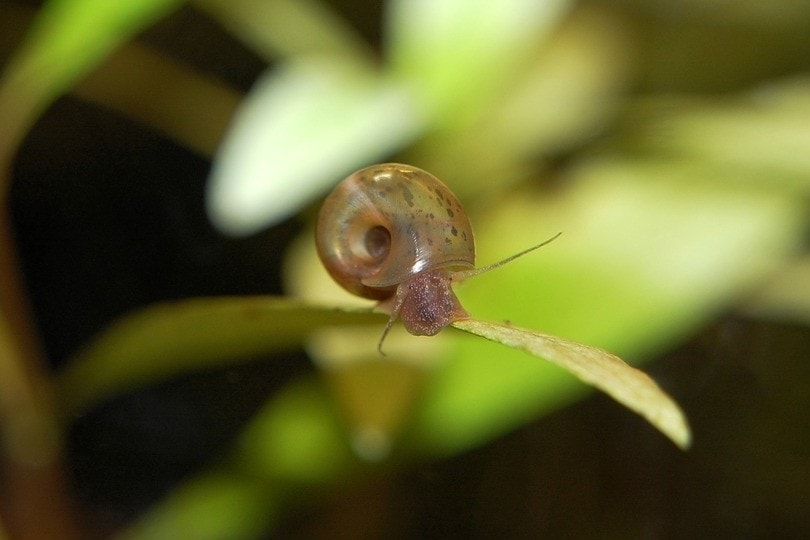
 How Do You Dispose Of Unwanted Aquarium Snails?
How Do You Dispose Of Unwanted Aquarium Snails?
If you have chosen snail removal methods that do not kill the snails, you are probably wondering what you should do with them. The best option is to either give the snails to another fish keeper who wants them, keep them in a snail-only aquarium, or humanely euthanize them via blunt force trauma or freezing. Snail eggs can be disposed of via the same methods.
If you have predatory fish that eat snails, you can either freeze the snails to feed them as a snack later, or you can give them alive to fish like pea puffers who benefit from eating live snails.
There are two disposal methods that you should never use—flushing down a toilet and other plumbing systems or releasing them into the wild in rivers, ponds, marshes, or puddles. Doing so can harm the native wildlife, such as the local flora and fauna. Many aquatic snails are also invasive species in various states and releasing them is illegal.
 Conclusion
Conclusion
Once you have gotten rid of the snails in the aquarium, there is a chance that it can happen again. You can prevent another snail infestation in your aquarium by cleaning all new decorations, live plants, and substrates before you place them in the aquarium. You can do this by dipping plants in a weak bleach solution and rinsing them thoroughly before placing them in the aquarium.
Soaking driftwood and rinsing any substrates in warm water can help eliminate snail eggs from entering your aquarium.
Featured Image Credit: Fauzan Maududdin, Shutterstock
 Which Snails Are Infesting Your Aquarium?
Which Snails Are Infesting Your Aquarium? Top 5 Aquarium Snail Removal Methods
Top 5 Aquarium Snail Removal Methods